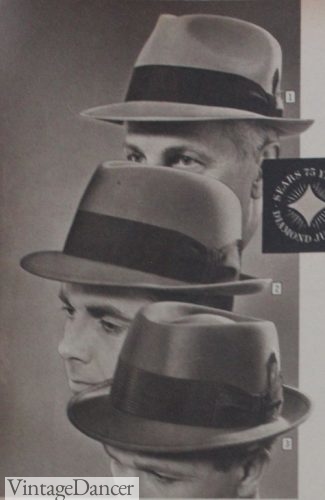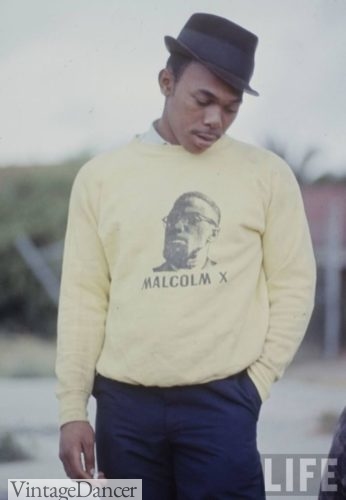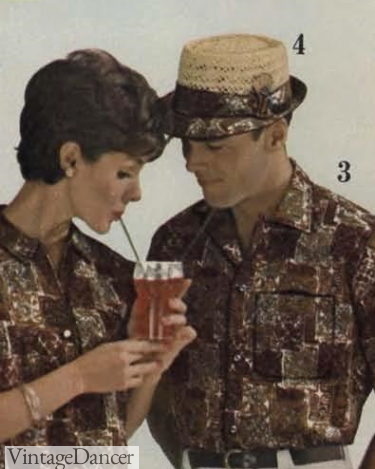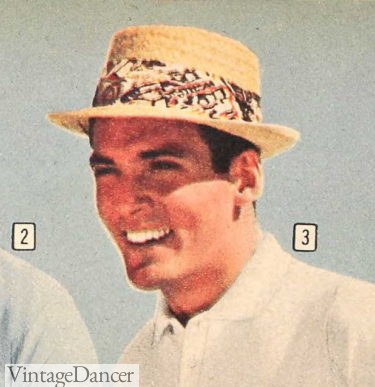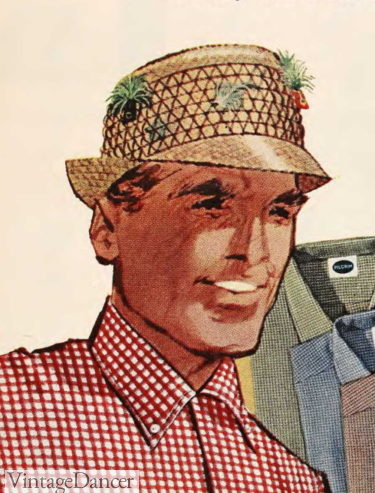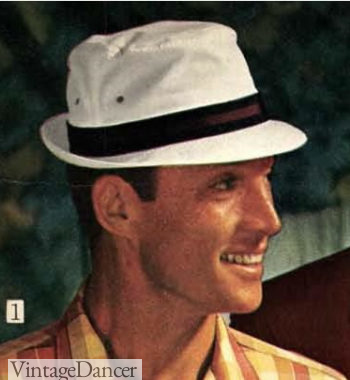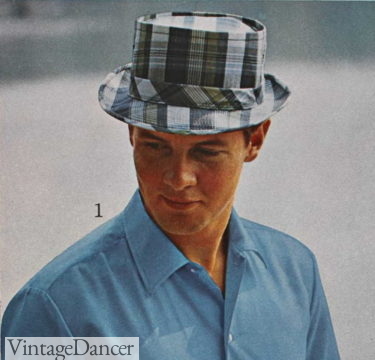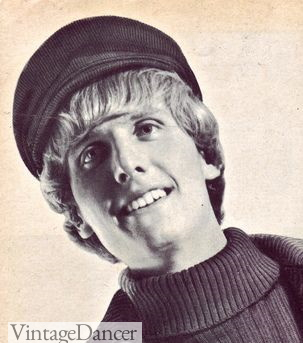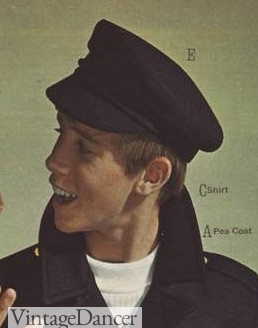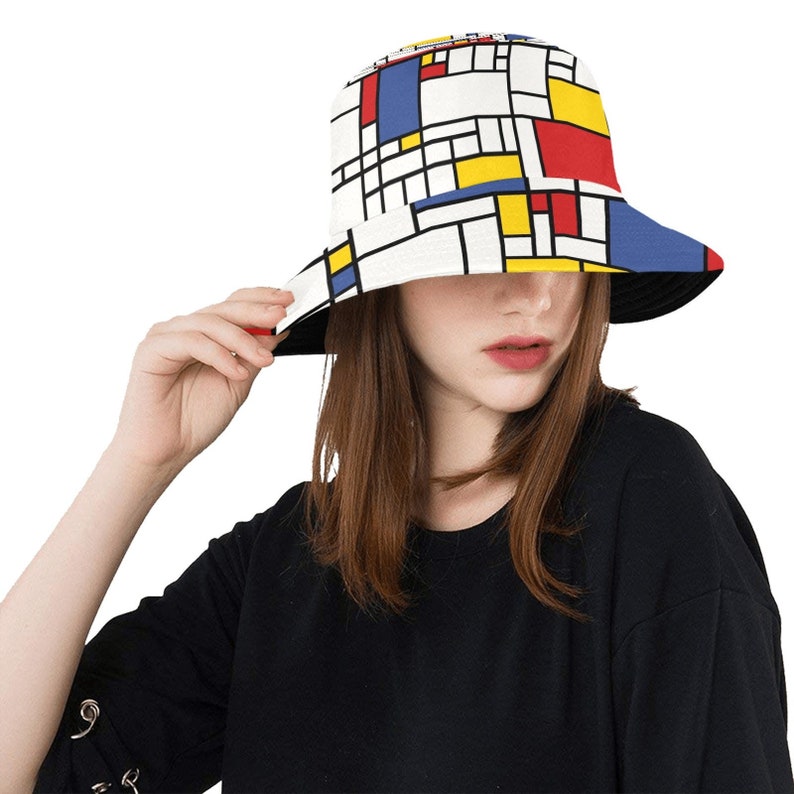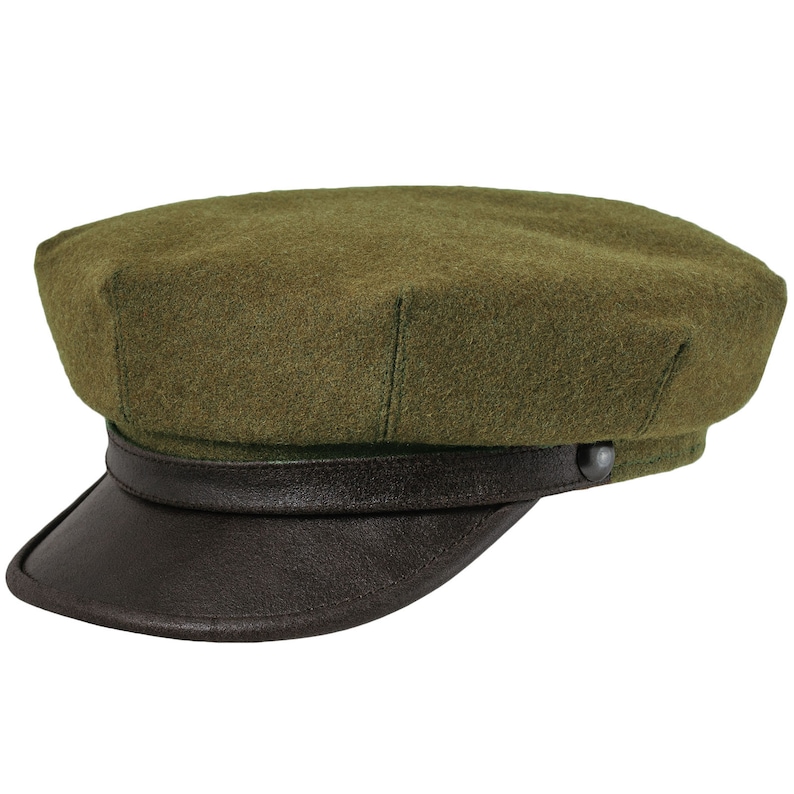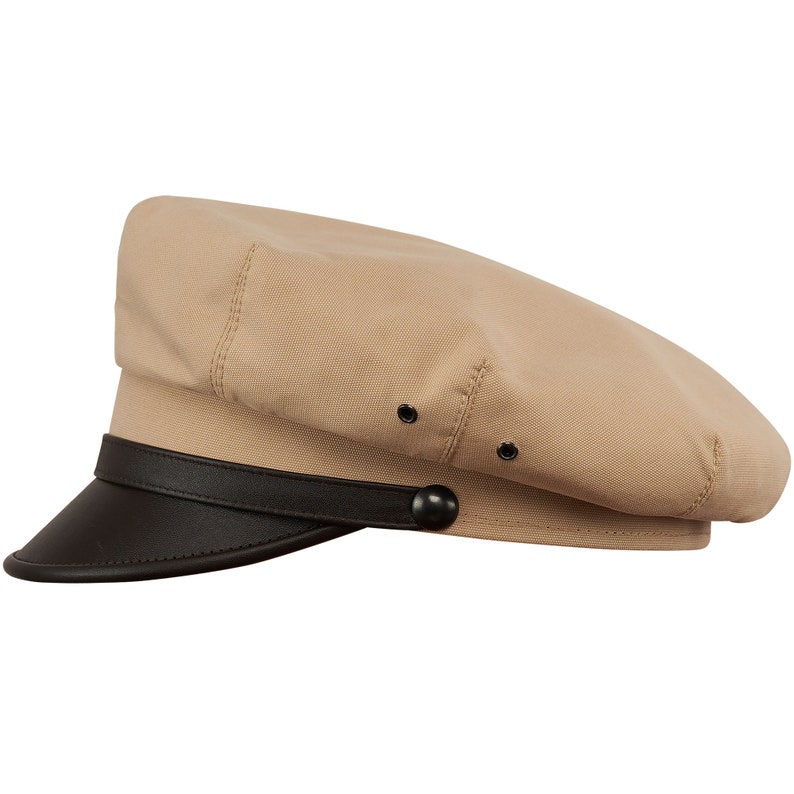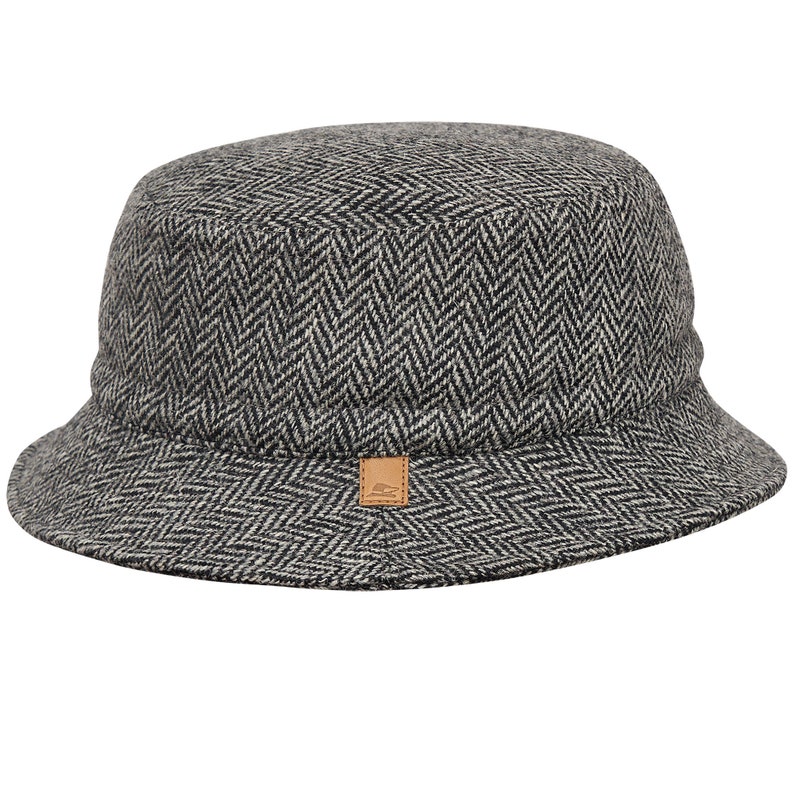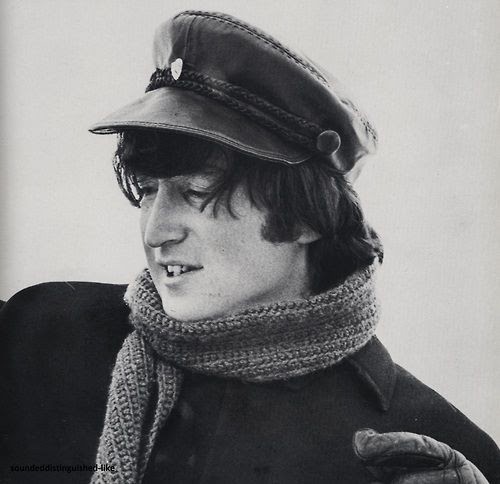
John Lennon, head of The Beatles, in a Greek Fisherman’s Cap and Scarf
By the mid 1960s, the number of men wearing hats in the United States was in steep decline. Figureheads from President John F. Kennedy to astronaut John Glenn went hatless, fashion changed, and in many ways it was simply more convenient to go hatless.
What came out on the other side of this decade was a first in men’s fashion of the 20th century: self expression through the hair, not the hat.
That isn’t to say that hats didn’t exist anymore, though. While a creeping majority went without, there were still hats and a culture around them. From The Rat Pack to The Beatles, hippies, and Mods, let’s take a look at 1960s men’s hats.
Men’s Hats in the 1960s
In many regards, the 1950s and 1960s were similar as far as hats went. The trend of narrowing brims, for example, had been ongoing since the 1950s, and only continued into the ’60s. Brims on many men’s dress hats tightened up until they reached the decade’s trademark “stingy” length. But not only were hats getting narrower brims — they were also getting shallower crowns.
As more Americans took to driving cars, and as cars themselves became more streamlined and weather resistant, there was less and less space between a man’s head and the roof of his car. With these advances came weatherproofing as well, which was one less reason to wear a hat.
This shift in hat culture set the stage for an interesting shift in 1960s men’s headwear. New men’s hat styles came and went, becoming less and less “hatlike” as the decade progressed.
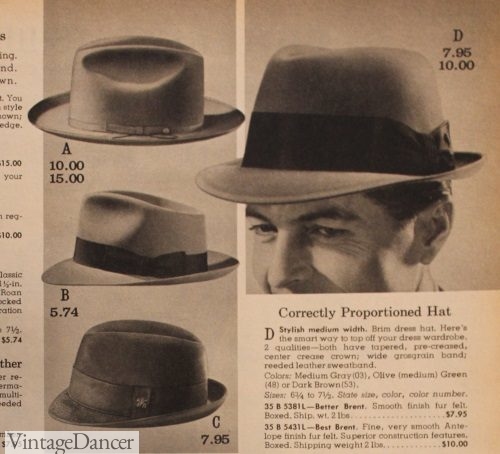
1964 felt hats (pinch front and center dent) and brushed suede on the bottom
1960s Fedoras and Trilbys
Even with declining popularity, hats were still dutifully worn by the older generation. The classics from the 1950s carried over with slight adjustments to the brim and crown, but maintained their general silhouette.
Earthy colored fedoras and trilbys were a unique departure from the traditional cool palette for hats, and introduced new colors in addition to the old: dijon, olive green, burgundy, dark navy, black and cinnamon brown with matching or a wide black band. Brim widths started at 3 inches on 1960 and reduced to 2 1/8 inch by the end of the decade.
This fraction of a population, however, was not enough to keep the industry afloat. The money in 1960s fashion came from that which was new, distinct, and trendy for the new generation. It also involved rapidly changing trends and obsolescence, further pressuring companies to play by the new fashion rules or die trying. Milliners struggled to enter the market.
- 1961 felt hats- green, brown, black
- 1965 wearing blue felt stingy brim fedora
In an attempt to appeal to the growing Mod and hippie subcultures, they began producing hats in cheaper materials. This lowered the price of hats and allowed them to employ more “shocking” patterns and colors, hoping to strike the right combination that would take off.
Both 1960s fedoras and 1960s trilbys were made in not only in traditional wool felt, but also in fabrics and other materials — tweed, herringbone, cotton, suede, leather, and two-tone combinations could all be found throughout the years.
Patterns also began to show much more, involving plaid, houndstooth, and even cotton prints such as tie dye, swirls, or paisley. These offbeat and “younger” 1960s hats were often self band hats, or hats whose bands were made of the same fabric as the hat body.

1961, olive green jacquard print and blue grey checks in the center. Cloth hast were “Sport Hat” while wool felt were usually “Town Hats.”
They were sometimes, though not always, decorated with a small pin, feather, or other decoration at the band. More daring individuals could add even more decoration to their hat, including several plumes or large pins. Paired with the distinct ’60s curled brim in the back, this set the stage for the exaggerated features of 1970s “pimp” hats.
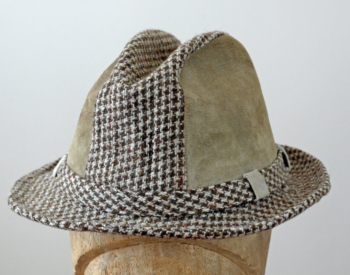
1960s Houndstooth Wool and Cream Suede Stetson Fedora seen on Etsy
Fedoras of the 1960s had a smaller brim and one of two crown types: center-crease, or pinch-front (with a teardrop-shaped crown). Brims were short, often around 1-3/4″, and color choices trended on the earthier side with burnt orange, brown, grey, deep olive, and dark burgundy.
Like their use in the decades’ past, fedoras were a classy hat worn as an accessory to suits or other formal attire. Beginning in the mid 1960s, however, fedoras also found themselves in the hands of those looking to make a statement against The Man — namely hippies.
Hippies typically wore older “outdated” models purchased from thrift shops, and embellishing them with beads, flowers, peace symbols, and touches of the Far East. Like any other aspect of the hippie wardrobe, the effect was discordant and disruptive.
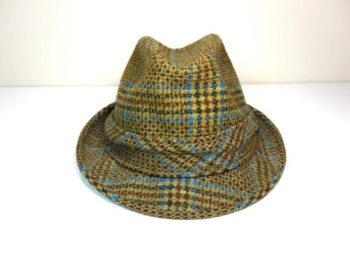
1960s Tweed Stetson Trilby seen on Etsy
By comparison, the trilby changed quite immensely. Originally worn as a more casual and sporty hat, they adjusted somewhat better to the changing times, particularly among Mods and hipsters. 1960s trilbys often had a much sharper center crease, a pointier crown, and an extremely short “stingy” brim. The angle from the brim to the crown also went much more steeply inwards, further streamlining the hat from the side
By the end of the 1960s, the trend for a sleek, droopy, angular, curled-brim trilby was firmly established. Its popularity would continue into the second retro revival of the early 2010s.
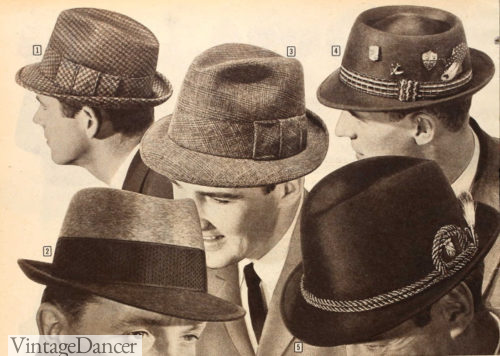
1960 trilby hats
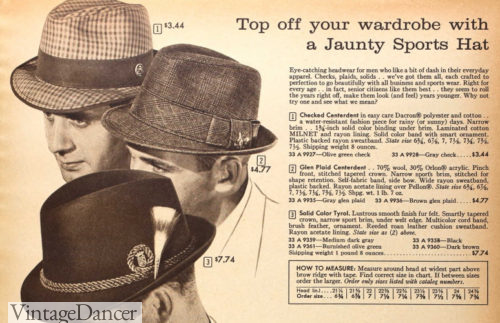
1961 trilby hats and a Tyrol hat (lower)
What happened to Summer Straw Hats?
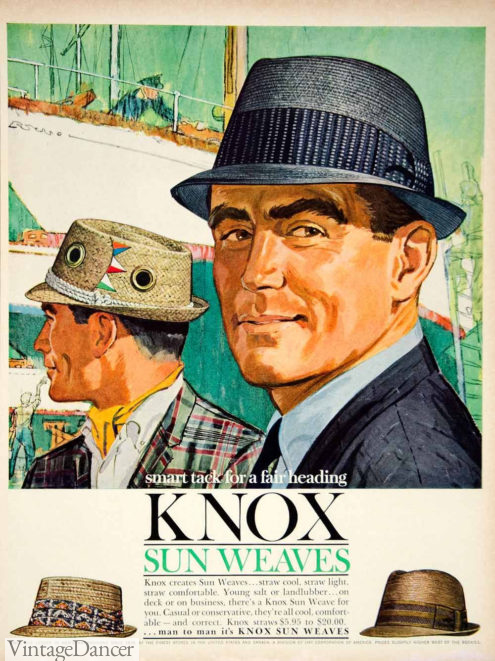
Knox woven hats – note the flashy bands and decorations.
Straw hats remained, though the tradition of the straw hat all but lost its influence in the sea of those looking to go against the grain. It began with dark hats being worn out of season as a “cheat,” and it went on from there.
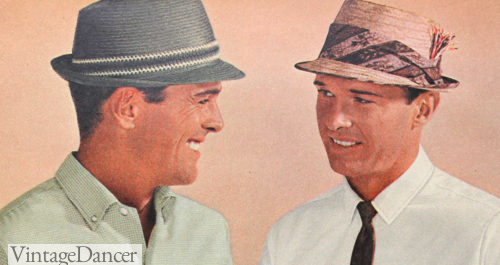
1961 straw hats, stingy brims
Into the late 1960s, straw woven hats with flashy bands and accents became a hat worn for occasions rather than seasons, particularly among sportsmen. The straw hat was the symbol of a man enjoying his time on his yacht, fishing at the docks, or expressing his casual and unconventional personality in the midst of the decade’s shifting office culture.
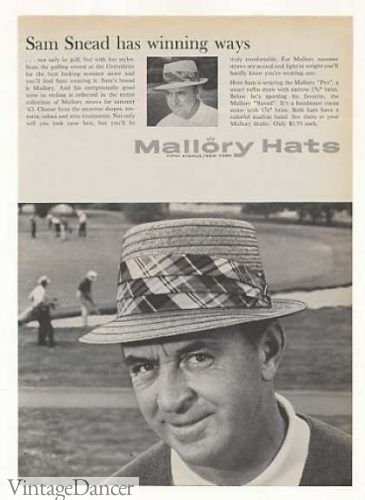
Golfer Sam Snead 1963
- 1962 Tiki print hat band and brim
- 1960 tropical pleated hatband
- 1963 fishing net and pineapples straw hat
Digger Hat / Slouch Hat and Western Hats
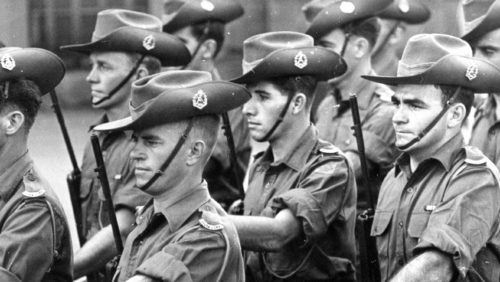
First Battalion of the Royal Australian Regiment, in their signature Slouch Hats
The Australian Slouch Hat (AKA digger hat, bush hat) was a blast from the past in the world of 1960s hats. Introduced by Australia’s growing involvement in the Vietnam War, it was lightweight and protected the face from the sun.
American soldiers would purchase them or have them made by local tailors in Vietnam. In 1964, their popularity finally became recognized and they were adopted as official American military headwear in 1964. Back at home, slouch hats had heavy influence among counterculture groups. They became explosively popular among hippies, folk singers, and other budding antiwar movements.
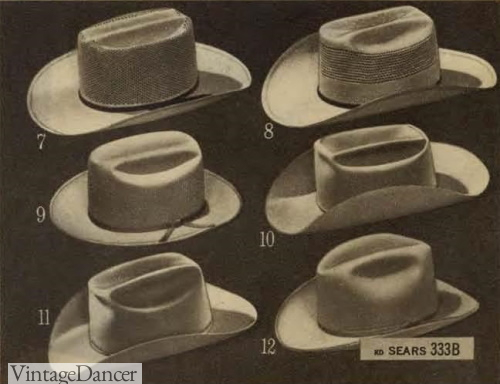
1965 men’s western hats-natural straw or ivory, grey, or black felt
Slouch hats have a distinct “Old West” shape to them, with a wide brim that snapped up against the crown on one side. On military models, a chin strap held the hat firmly at a slight downward angle, and an insignia or badge sat on the raised brim or on the front of the hat.
The slouch hat can be traced all the way back to the 1600s. But in the United States was typically overshadowed by the cowboy hat shape. Funny enough, this also saw some revival among folk musicians and purveyors of the 1960s Neo-Western/Acid Western genre.
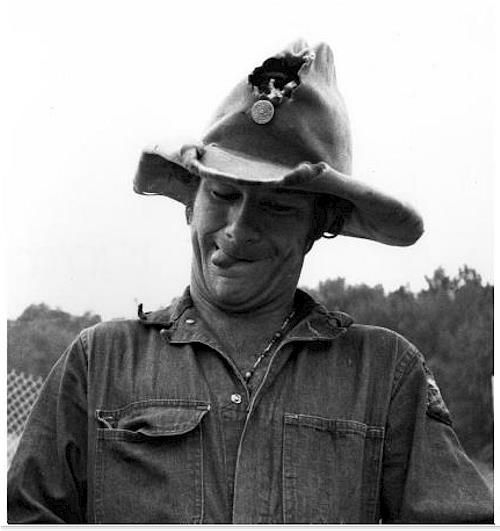
Woodstock MC Hugh “Wavy Gravy” Romney
Bucket Hats and Boonie Hats
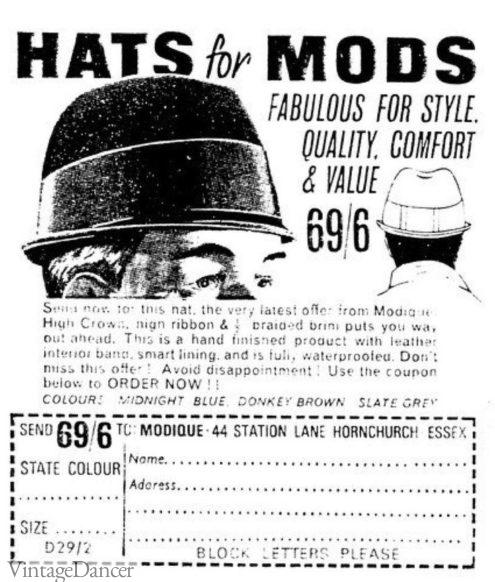
Modish ultra-stingy brim hat
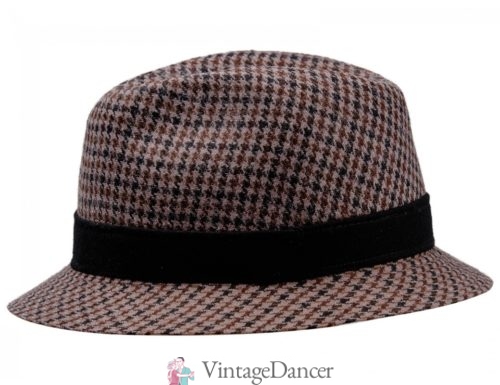
Stiff Houndstooth Bucket Hat found at Sterkowski
The bucket hat (e.g. roll-up hat) began as a fashion runway item for Mods. It was stiff and heavy, with a high crown, thick band, and eyelets on the crown for ventilation. Brims could be the standard stingy all the way up to nonexistent. Tweed, plaid, and houndstooth were the most popular patterns. Unlike what we think of today at the term “bucket hat,” these were typically made of a thick and weatherproof wool, like more formal 20th century hats.
Golf hats in the mid to late 60s had a more modern shape with a cotton poplin material and soft round telescope crown. Plain colors featured a stripe hat band. All over prints such as the plaid below often matched men’s golf shorts.
- 1968 white stingy brim bucket hat
- 1966 plaid golf hat
The modern “bucket hat” we wear in hot weather and for festivals today also finds its roots in the 1960s, albeit from a different source — the Vietnam War. These were boonie hats, and they were soft, unstructured, durable, easy to clean, and cheap. They took off among hippies and saw popularity throughout the 1970s and ’80s as well.
1960s boonie hats were made of poplin (later plain cotton) with a stitched floppy brim, eyelets on the crown, and a hat band that was able to hold small items (like a pack of cigarettes and a small flashlight). A drawstring could be pulled to strap the hat below the chin. Surplus Vietnam War boonie hats are still relatively accessible and inexpensive, and when decorated make a great authentic touch to hippie and protester outfits.
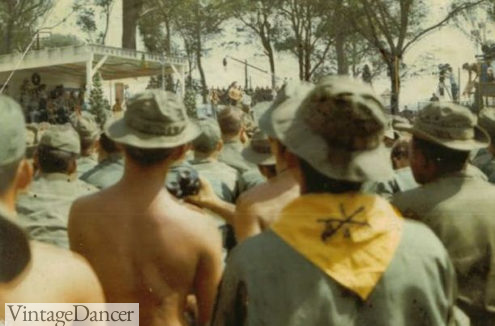
Soldiers in Boonie Hats
It is worth noting that online, many vintage clothing vendors sell boonie hats with all-over advertisements, typically beer and cigarette brands, as 1960s hats. This is incorrect, and most of them can be traced to the 1980s or 1990s. 1960s boonie hat patterns followed general late 1960s trends: paisley, swirls, and other saturated psychedelic patterns.
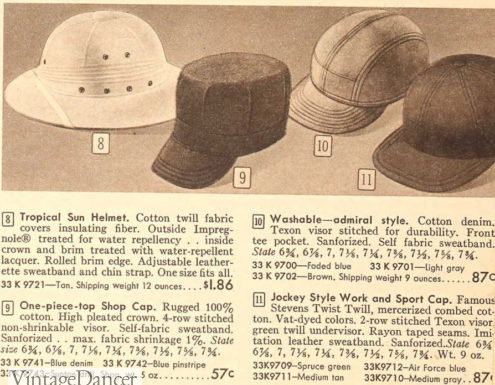
1962 Military-inspired hats pulled form a Montgomery Ward catalog. Shop caps, jockey caps (baseball), “railroad” style hats were also popular.
Breton Cap / Mariner’s Cap
The Greek fisherman’s cap owes much of its popularity in the 1960s to counterculture of the 1950s. After being worn by Marlon Brando in The Wild One, it took on a role as a hat of the rebellious younger generation. Comfortable, accessible, and authoritative, it became an incredibly versatile statement hat. Mods, The Beatles, hippies, biker gangs, models, folk musicians, Marxist revolutionaries, businessmen, and even militant 1960s protester groups all claimed the hat as part of their own style. As far as sheer influence goes, no other hat in the 1960s even compares.
- 1966 fisherman cap
- 1966 Breton cap
Obviously, much of its mainstream popularity is owed to its appearance on the heads of celebrities of various branches, but it also had an edgy allure that attracted many. It was a hat that demanded respect and recognition — something either worn for that purpose, or donned with irony by those who called for peace.
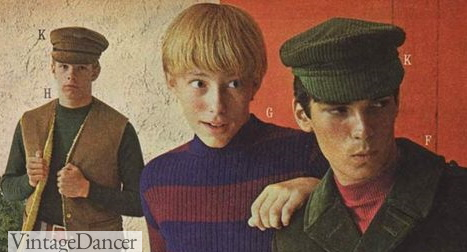
Corduroy fisherman caps
Like anything in the 1960s, it also saw a great deal of change throughout the course of its popularity.
Baker Boy Cap
The standard 1960s baker hat was an unstructured flat-top hat with a small structured visor at the front, typically with a loose ribbon or rope band for decoration. The visor can be self cloth or leather, while the body is typically wool, denim, canvas, or corduroy.
The shape of the hat has roots in 19th and early 20th century laborer clothing. “Baker boy” variations lose the decoration in exchange for panels that meet at the top of the crown, primarily in corduroy or cotton cloth.
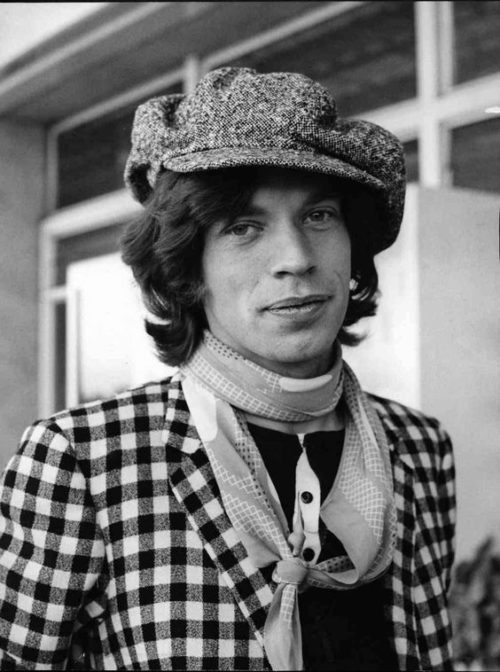
Mick Jagger wears a baker boy cap
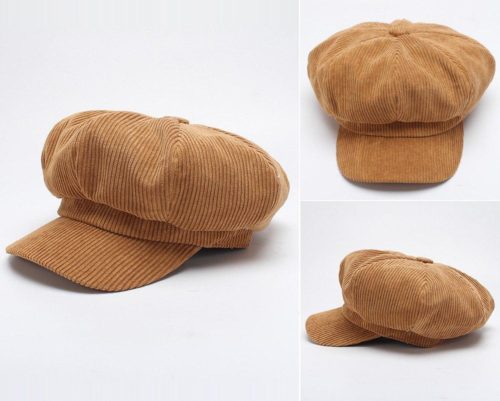
1960s style Baker Hat by Anarchic Fashion
Non-Hat Headwear
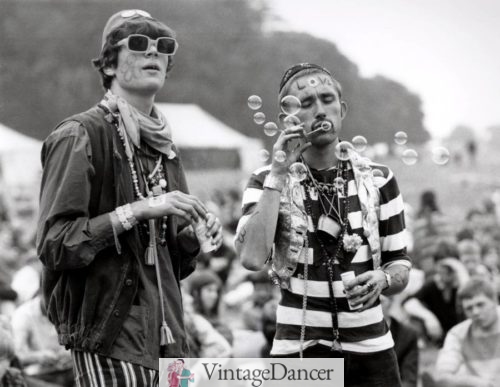
Two hippie men blowing bubbles at the 1967 Festival of the Flower Children in England
Bandannas, beanies, scarves, garlands, headbands, and other such nontraditional headwear emerged in the later 1960s, gaining popularity among different groups. Most of these new headwear styles began with hippies before spreading out into mainstream/fashion circles. Their appearance was also, unfortunately, the final nail in the coffin for the reign of the American hat industry.
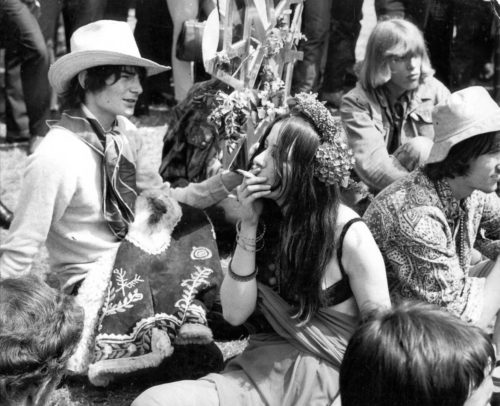
A group of hippies in assorted hats.
Read More:
- Men’s Hats of the 1950s
- 1960s Men’s Fashion Overview
- Hippie History and Fashion
- 1960s Men’s Outfit Ideas
Shop 1960s Men’s Hats
